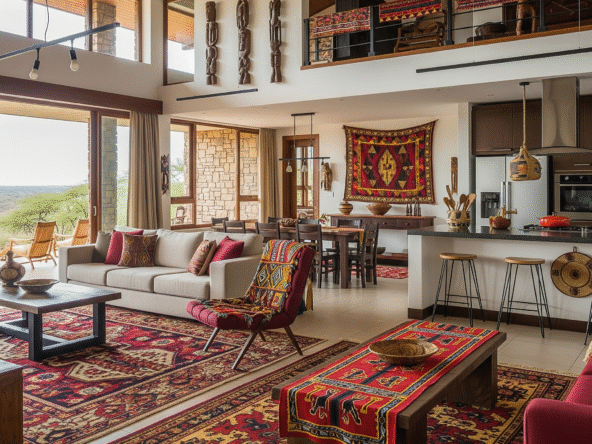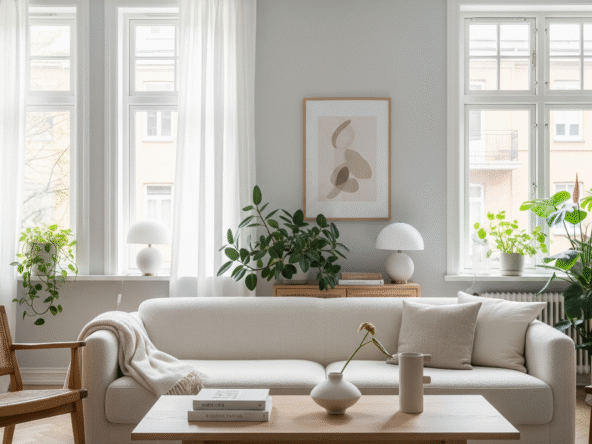In the evolving landscape of homes and workspaces, one style consistently captures attention with its clean lines, minimalist aesthetic, and emphasis on functionality: modern interior design. Far from being cold or impersonal, true modern design creates serene, highly efficient, and beautifully curated spaces that resonate whether you’re in a bustling city like New York, a tranquil suburb in the US, or a rapidly developing urban center like Nairobi.
This article delves into the core principles of modern interior design, exploring how it harmoniously blends visual appeal with practicality. We’ll also touch upon the crucial role of interior architecture in laying the foundation for a truly contemporary and functional space.
Understanding Modern Interior Design
Modern interior design emerged from the early 20th-century Modernist art movement, rejecting ornate, traditional styles in favor of simplicity, functionality, and innovation. It’s often confused with contemporary design (which refers to what’s current), but modern design adheres to a distinct set of characteristics:
- Clean Lines and Minimalism: A hallmark of modern interior design is the absence of clutter and excessive ornamentation. Furniture typically features sleek, straight lines or gentle curves, avoiding heavy carvings or elaborate details. This creates a sense of calm and order.
- Natural Materials: There’s a strong emphasis on natural materials like wood (often light or medium tones), metal, glass, and stone. These materials are often left in their natural state or minimally processed, highlighting their intrinsic beauty.
- Neutral Color Palettes: Walls and large furniture pieces usually stick to a neutral base of whites, grays, beiges, and blacks. Pops of color are then introduced sparingly through artwork, textiles, or decorative accessories, providing visual interest without overwhelming the space.
- Open-Concept Layouts: Modern home interior design often favors open floor plans, especially for common areas like living rooms, dining rooms, and kitchens. This promotes a sense of spaciousness and fluidity between zones.
- Emphasis on Light: Maximizing natural light is paramount. Large windows, skylights, and strategically placed mirrors are common. Artificial lighting is often subtle, integrated, and designed to enhance the minimalist aesthetic.
- Functionality First: Every element in a modern space serves a purpose. Unnecessary items are eliminated, ensuring the space is both beautiful and highly efficient for daily living. This focus on utility is what makes a modern house interior design truly practical.
The Foundation: Interior Architecture in Modern Spaces
While interior design focuses on the aesthetics and furnishings within a structure, interior architecture deals with the structural aspects of interior spaces – the bones of the building. It considers how walls are placed, how light enters, the flow between rooms, and how built-in elements function. For modern interior design, interior architecture is absolutely critical.
- Spatial Planning: Interior architecture shapes the layout of a modern home interior, creating the open plans and seamless transitions characteristic of the style. It ensures that the house inner design promotes natural movement and clear sightlines.
- Integration of Built-Ins: Features like built-in shelving, hidden storage solutions, and integrated lighting systems are often part of the interior architecture plan, contributing to the minimalist and functional nature of modern spaces.
- Light Flow: Architects design openings and structural elements to optimize natural light penetration, a cornerstone of modern design.
- Materiality: The choice of foundational materials for walls, flooring, and ceiling treatments – often simple and unadorned – is an interior architecture decision that underpins the modern aesthetic.
An interior designer often works hand-in-hand with an interior architect or an architectural team to ensure the foundational structure supports the desired modern aesthetic and functionality.
Bringing Modern Design to Your Home
Whether you’re starting from scratch or looking to update existing interiors, incorporating modern interior design elements can revitalize your space.
- Start with Decluttering: The first step to any modern interior is removing excess. Embrace the mantra “less is more.”
- Embrace Neutrality: Begin with a neutral base for walls and large furniture. This creates a calm backdrop for your design.
- Focus on Form and Function: Choose furniture pieces that are both aesthetically pleasing and serve a clear purpose. For example, a sleek, minimalist sofa in a modern living room design.
- Incorporate Natural Elements: Use wood, stone, or metal accents to add warmth and texture without compromising simplicity.
- Strategic Lighting: Opt for recessed lighting, minimalist fixtures, and ensure ample natural light.
- Thoughtful Accents: Introduce color or personality through carefully selected artwork, plants, or a few well-chosen decorative objects. This applies whether it’s a modern drawing room design or a compact studio.
Finding Modern Design Expertise
If you’re envisioning a sleek, functional, and beautiful modern home interior, considering professional help is a smart move. Many interior designers and interior design companies specialize in this aesthetic. When searching for an interior designer near me or interior design firms, look for portfolios showcasing their expertise in modern interior design and modern house interior design.
A skilled interior decorator near me from a reputable interior company can guide you through the process, translating complex interior design ideas into a cohesive and stunning reality. Their expertise in both design principles and interior architecture considerations will ensure your space is not only beautiful but truly functional for contemporary living.



